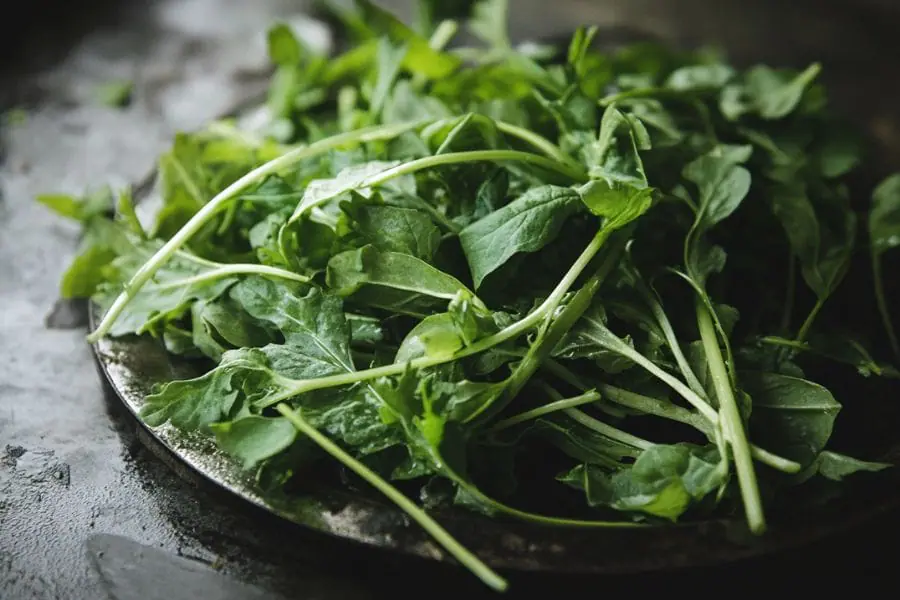Foraging in the fall is a fantastic way to connect with nature while gathering some of the season’s best wild edibles. As the weather cools and leaves change, the forest floor and open fields offer up a bounty of flavorful plants and mushrooms ready to be enjoyed.
From earthy mushrooms and crisp greens to unique wild fruits, fall foraging provides ingredients that are perfect for adding warmth and richness to your seasonal recipes. Whether you’re an experienced forager or just getting started, fall is the perfect time to explore the outdoors and discover delicious finds. Here are ten fantastic things to forage this season!
A Quick Reminder
Before we get into the specifics about where and how to find these plants and mushrooms, we want to be clear that before ingesting any wild plant or mushroom, it should be identified with 100% certainty as edible by someone qualified and experienced in mushroom and plant identification, such as a professional mycologist or an expert forager. Misidentification can lead to serious illness or death.
All plants and mushrooms have the potential to cause severe adverse reactions in certain individuals, even death. If you are consuming wild foragables, it is crucial to cook them thoroughly and properly and only eat a small portion to test for personal tolerance. Some people may have allergies or sensitivities to specific mushrooms and plants, even if they are considered safe for others.
The information provided in this article is for general informational and educational purposes only. Foraging involves inherent risks.
Our 10 Favorite Fall Foragables
Here are our favorites, not necessarily in order of what we like best:
Hen of the Woods (Maitake) Mushroom

Hen of the Woods, also known as Maitake, is a large, frilly mushroom with a rich, earthy flavor. Because of its nutritional value and medicinal uses, it’s often used in stir-fries and soups. It also has a nice, hearty texture, so it’s often used as a meat substitute.
It is prized for its potential health benefits, including immune support and cholesterol management, and is popular in both Asian and Western cuisines.
Where to Find It
Hen of the Woods grows at the base of hardwood trees, especially oak trees, in late summer through fall. It typically appears in large clusters with layers that resemble feathery plumes, hence its name.
It can be found in forests throughout the U.S., especially in the Northeast and Midwest. Look for it near the base of mature hardwood trees after a period of rain, when moisture in the soil encourages its growth.
Chanterelle Mushrooms

Chanterelles are golden-orange, trumpet-shaped mushrooms with a delicate, peppery flavor. They’re popular in gourmet cooking, often added to sauces, pasta, and risotto for their fruity aroma and rich texture.
Known for their high vitamin D content, chanterelles are a nutritious and flavorful choice for a wide variety of dishes.
Where to Find It
Chanterelles are often found in coniferous and hardwood forests, particularly near oak, pine, and hemlock trees. They thrive in mild fall climates and grow in clusters along forest floors. Look for them in mossy, damp areas after rains, especially in the Pacific Northwest and Southeast U.S.
Their bright yellow-orange color makes them relatively easy to spot, but be cautious of look-alikes. Ensure proper identification do you don’t end up taking home unknown kinds of mushrooms.
Oyster Mushrooms

Oyster mushrooms are fan-shaped, soft mushrooms with a mild, anise-like flavor. They’re often used in stir-fries, soups, and as a meat alternative in vegan dishes due to their delicate texture and savory taste.
These mushrooms are also rich in antioxidants and nutrients. This makes them a tasty and healthful addition to many recipes.
Where to Find It
You can find these mushrooms growing on decaying hardwood trees, such as beech or poplar, typically in cooler fall months. They prefer shaded, moist environments and are found across the U.S., especially in forested areas.
Oyster mushrooms have a distinct fan shape and grow in shelf-like clusters. They can be gray, tan, or white and are often found on fallen logs or stumps after rain.
Persimmons

Persimmons are small, orange fruits with a sweet, honey-like flavor when fully ripe. They’re often used in jams, baked goods, or simply eaten fresh. American persimmons, native to the U.S., are smaller and more astringent than Asian varieties, but their flavor is deliciously sweet once they soften.
Where to Find It
Persimmons grow on trees in woodlands and along roadsides, particularly in the Southeast and Midwest. Look for them in late fall, as frost helps ripen them. You can identify them by their orange color, and they typically hang in clusters after most of the tree’s leaves have fallen.
Fully ripe persimmons are soft and may fall to the ground. Make sure to avoid unripe fruit, as they can be overly astringent.
Rose Hips

Rose hips are the small, round fruits that grow on rose plants, and they’re packed with vitamin C and antioxidants. They have a tangy, floral taste that makes them perfect for adding to teas, jams, and syrups.
People love rose hips for their immune-boosting benefits, and their bright color makes them a fun addition to fall and winter treats. Whether you’re stirring them into a cup of tea or spreading them on toast, they give a nice twist to seasonal flavors.
Where to Find It
Rose hips grow on both wild and cultivated rose bushes, usually ripening in late fall. You’ll find them in meadows, gardens, and along hiking trails, especially in temperate areas. Keep an eye out for small, red or orange fruits on rose bushes after the flowers have faded.
To get the best flavor, harvest them when they’re firm and fully colored, typically after the first frost. That’s when they’re at their peak, packed with flavor and ready to use.
Chickweed

Chickweed is a soft, green plant with a mild, grassy flavor that’s perfect for salads and sandwiches, or as a garnish. It’s packed with nutrients like vitamins A and C, along with iron, so it’s a great way to give your meals a healthy boost.
Not only is chickweed a favorite in herbal remedies, but its fresh, refreshing taste makes it a great addition to a variety of dishes. Whether added to a salad or used in a natural remedy, chickweed is both tasty and nutritious.
Where to Find It
Chickweed tends to grow in cool, damp spots like gardens, fields, and along the edges of forests, especially in the fall and early winter. It’s a low-growing plant with tiny, star-shaped white flowers and oval leaves.
It loves shaded, moist areas and can be found all over the U.S. during the cooler months. You’ll often spot it when the weather starts to grow colder.
Pine Nuts

Pine nuts are the edible seeds from pine trees, and they add a rich, nutty flavor to things like pesto, salads, and baked goods. Packed with healthy fats and protein, these seeds are a great foraged food to enjoy in the fall and early winter.
Where to Find It
Pine nuts come from the cones of certain pine trees, like pinyon pines in the Southwest, and are typically found in dry, mountainous areas. Harvesting them takes some patience because you need to find mature cones and carefully extract the seeds.
To tell if the seeds are ready, look for cones with scales that are slightly open. This usually means the seeds inside are ripe.
Wild Garlic (or Wild Onion)

Wild garlic, also called wild onion, is a grassy plant that has a strong garlicky taste, making it perfect for seasoning or garnishing. Its bold aroma is a real standout in soups, stews, and egg dishes. It’s rich in vitamins and antioxidants, adding both flavor and nutrients to recipes.
Where to Find It
This plant grows in fields, lawns, and open woodlands during fall and early winter. Look for long, green, tubular leaves that smell distinctly of garlic or onion. Wild garlic is common in the eastern and southern U.S., and its scent makes it easy to identify.
Dandelion Greens

Dandelion greens are slightly bitter, nutrient-rich leaves commonly used in salads, sautés, and teas. High in vitamins A, C, and K, these greens are popular for their health benefits and add a bold, earthy flavor to dishes.
Where to Find It
Dandelions are found across the U.S. in meadows, lawns, and open fields. The leaves are best foraged in fall or early winter, as cooler weather reduces bitterness.
Look for the jagged-edged leaves growing close to the ground, which are characteristic of dandelions.
Wintergreen Berries

Wintergreen berries are tiny, red gems with a fresh, minty flavor that stands out in any dish. They’re often used in teas, sauces, and flavorings to bring a unique taste that’s both refreshing and bold.
Beyond their delicious flavor, wintergreen leaves and berries are also known for their pain-relieving properties. They’re commonly used in teas, sauces, and flavorings for their distinctive flavor.
Where to Find It
Wintergreen plants grow in forested areas, particularly in the Northeast and northern U.S. Look for low-growing plants with oval leaves and bright red berries in shaded woodland areas.
The berries ripen in late fall and can be harvested throughout the winter.
One Final Disclaimer
The information provided in this article is for general informational and educational purposes only. Foraging for wild plants and mushrooms involves inherent risks. Some wild plants and mushrooms are toxic and can be easily mistaken for edible varieties.
Before ingesting anything, it should be identified with 100% certainty as edible by someone qualified and experienced in mushroom and plant identification, such as a professional mycologist or an expert forager. Misidentification can lead to serious illness or death.
All mushrooms and plants have the potential to cause severe adverse reactions in certain individuals, even death. If you are consuming foraged items, it is crucial to cook them thoroughly and properly and only eat a small portion to test for personal tolerance. Some people may have allergies or sensitivities to specific mushrooms and plants, even if they are considered safe for others.
Foraged items should always be fully cooked with proper instructions to ensure they are safe to eat. Many wild mushrooms and plants contain toxins and compounds that can be harmful if ingested.


